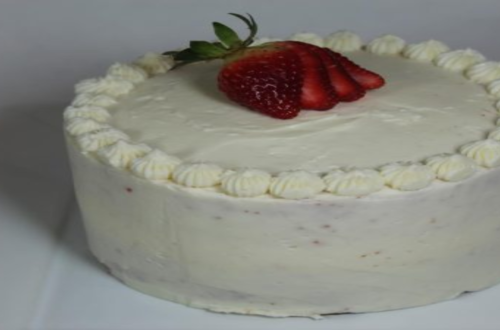How To Make A Skirt Pattern
A few years ago I put up a skirt pattern demonstration on my old channel. If your interested, please visit the link below. I made some significant changes and also included the fitting session in the segment as well.
SUPPLIES
The link for your supply list is located below this video. You’ll probably need 1-2 rulers for this segment and it’s pretty inexpensive. Now, I’d like to discuss pattern paper.
Pattern paper is highly recommended when drafting your first pattern. The pattern is marked with symbols, such as numbers, letters and dots. These symbols help when to determine an accurate grain line.
An alternate to professional pattern paper is gift-wrapping paper. Big retailers such as target and Walmart usually carry gift wrap with boxes or grids on the wrong side as a cutting guide.
If your considering draping or pattern making as a hobby or profession I would highly recommend a dress form. I’m going to take the measurements on my own form. If your taking the measurements on yourself: wear a form fitting top or leotard; wrap an elastic waistband around your waist so it’s hitting the belly button. Ok, so let’s get started.
FABRIC
Any woven fabric such as a mid weight muslin or cotton is good to use for the test fitting.
If you have any questions or issues , please feel free to ask and enjoy the lesson.
MEASUREMENTS
Before we begin drafting we have to do a little bit of math.
The final equation will be the number that you will use to make your skirt pattern
1.Waist Formula:
Waist measurement + 1/2″ (ease) ÷ 4 + 1 (darts) = Example: 27 1/2 + 1/2 ease ÷ 4 + 1(darts) = 8
2. Hip Formula:
Hip measurement + 1″ (ease) ÷ 4 = Example: 35″ + 1″ (ease ) ÷ 4 =9
3. Find the distance from your waist to the fullest part of your hips.
SKIRT FRONT
Please follow video demonstration:
STEP 1.Come down 1” from the top edge of the pattern paper and label it A
STEP 2. The length of the skirt can vary anywhere from 20-22”. Extend a line out using your desired skirt length.
STEP 3. Take the the distance from your waist to your hips and label it B.
STEP 4. C will represent the Length of the skirt sloper
STEP 5. Use the hip measurement determined using the formula and extend horizontal lines out from A, B & C.
STEP 6. Extend a line from A to C to create a box
STEP 7. Label the skirt pattern as shown and draw in your grain line.
STEP 8. Use the waist measurement determined from the formula, from A place a notch and label it D
STEP 9. From D go up 1/2” and label it E
STEP 10. Find the half way point between A & D and place a notch ( This is the center of your dart) Go over 1/2” on both sides and place a mark.
STEP 11. From the dart center go down 4 1/2′ and place a dot ;this is the apex of the dart.
STEP 12. Extend a line out from all dart points.
STEP 13. Take the hip curve ruler and place it so the shallow end is touching the straight edge of the skirt and the curved edge extends out to E. You may have to move the ruler around a bit to get a smooth curve.
STEP 14. Using a ruler extend a line out from E to side seam. Blend in a slight curve to shape the sideseam.
STEP 15. Label CUT ON FOLD.
The steps for the skirt back are exactly the same for the exception of the dart length, which is 3 1/2″ I’ll quickly review the step and you can always find the detailed instructions, located at the link below:
SKIRT BACK
Please follow video demonstration:
STEP 1. Draw a line the length of the skirt
STEP 2. Take your hip measurement and extend a horizontal line out.
STEP 3. Create a box
STEP 4. Label the skirt and draw in your grain line.
STEP 5. Label the skirt back in the same manner as the skirt front, but in reverse.
STEP 6. Place a notch and label it D; this will represent the waist measurement.
STEP 7. Go up 1/2” and label it E
STEP 8. Find the half way point from D & A: place a mark and label it F ( this is the center of your dart)
STEP 9. Go up 1/2” from both sides and place a mark
STEP 10. Extend the line out from all dart points equaling 3 1/2″
TRUING DARTS
Fold the dart excess towards the side seam before tracing the waist line. Make sure the line blends smoothly before tracing. Take a ruler and darken the imprints.
MUSLIN LAYOUT
After you finish drafting or creating your skirt pattern we’ll transfer it over to muslin or any inexpensive mid weight 100 % cotton fabric for a fitting. DO NOT use a loose woven fabric, such as silk or jersey because the vertical and horizontal grains tend to shift and you won’t get an accurate fitting.
Fold your fabric selvage to selvage. Selvage is the uncut portion of the fabric and has the least amount of give.Place the front skirt on the fold and the back a few inches away and pin.
Use a clear ruler and line the straight edge of the ruler against the grain line on the skirt front & skirt back. Make certain that the lines are parallel to each other.
If the graininess are off : your skirt will either sway or look distorted for the final fitting.
Transfer the darts and hipline from the pattern paper onto the fabric by using tracing paper and a tracing wheel.
FITTING
Sew the skirt and iron without steam. The following guidelines are essential to a well-balanced skirt. The hemline and hipline of the skirt have to parallel to the floor.
Shorten the dart: If appear to have streamlines shorten the dart length. Extend the dart length If the darts have too much fullness around the center of the skirt. The hemline and hipline of the skirt should be even with the floor.
If you have any questions, please leave them on my Youtube channel or the comments section of this site.
Thanks!!
Felicia






